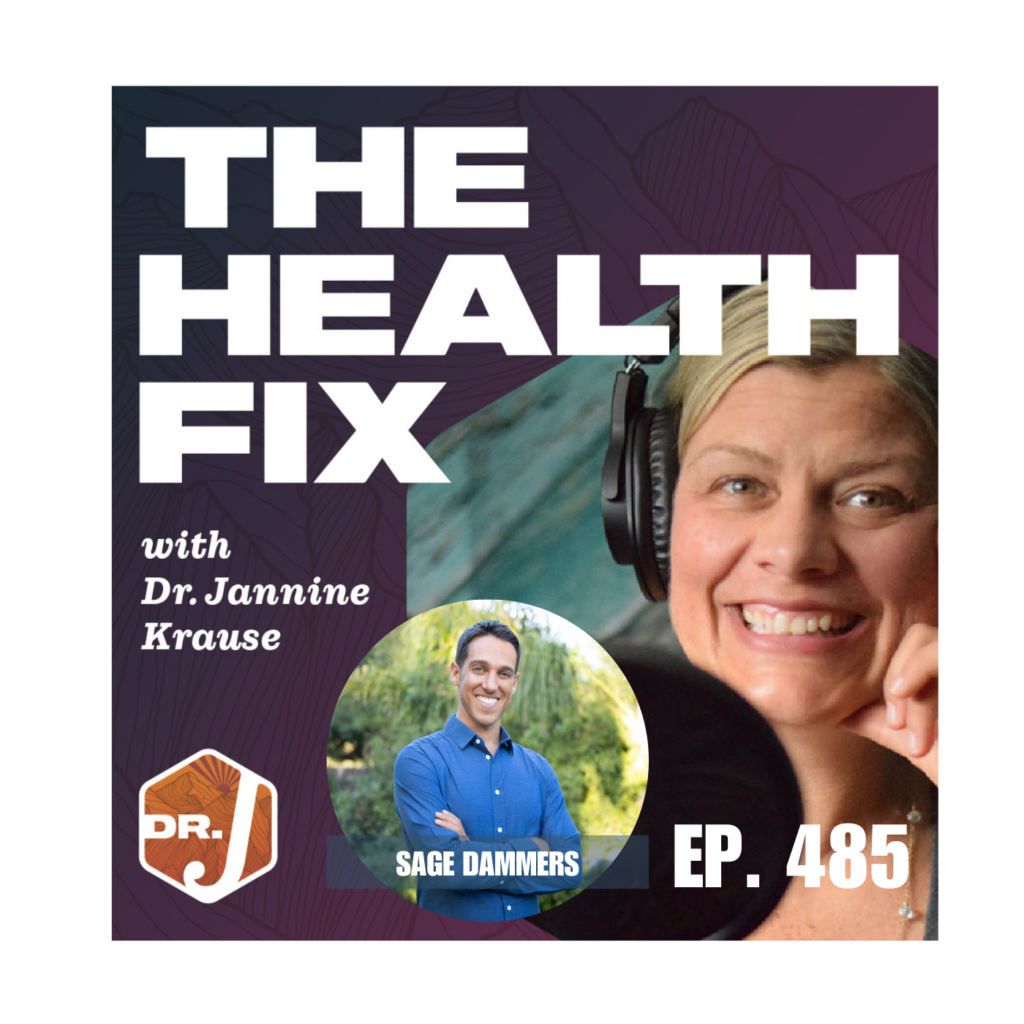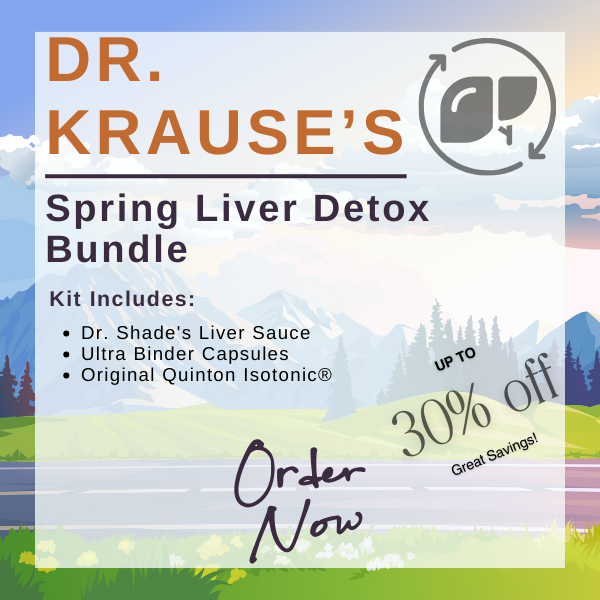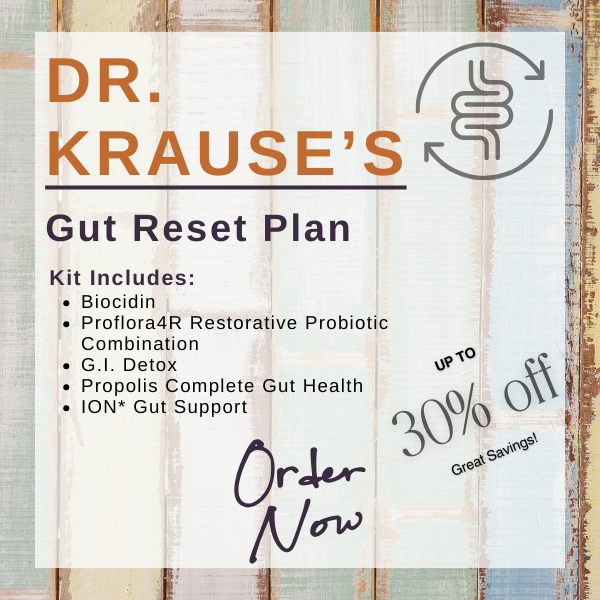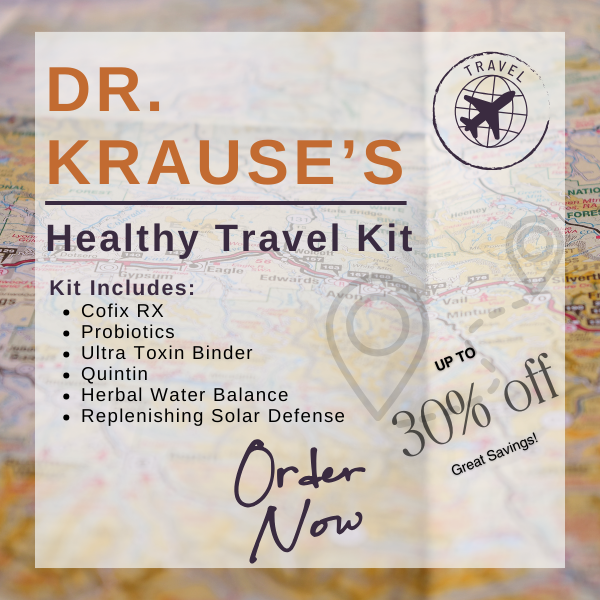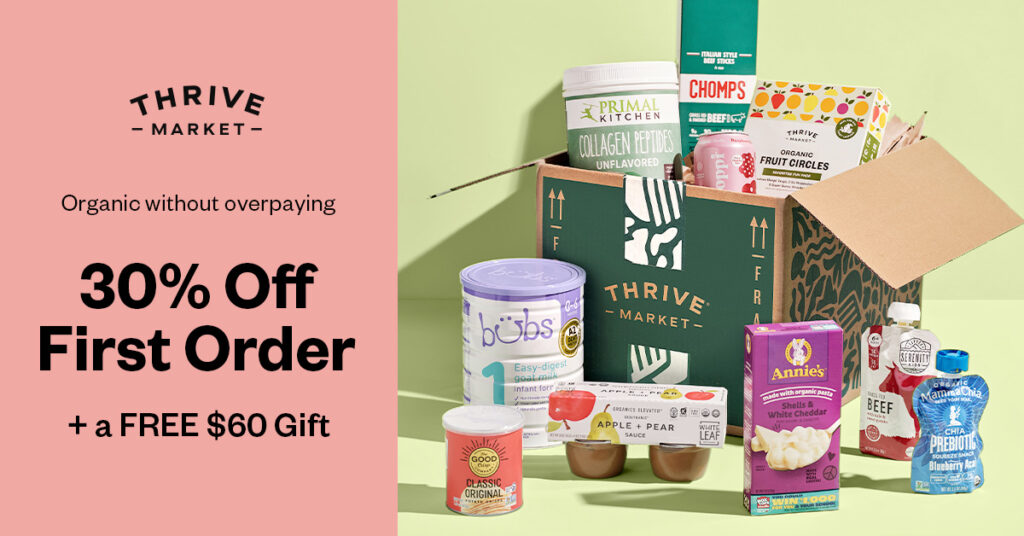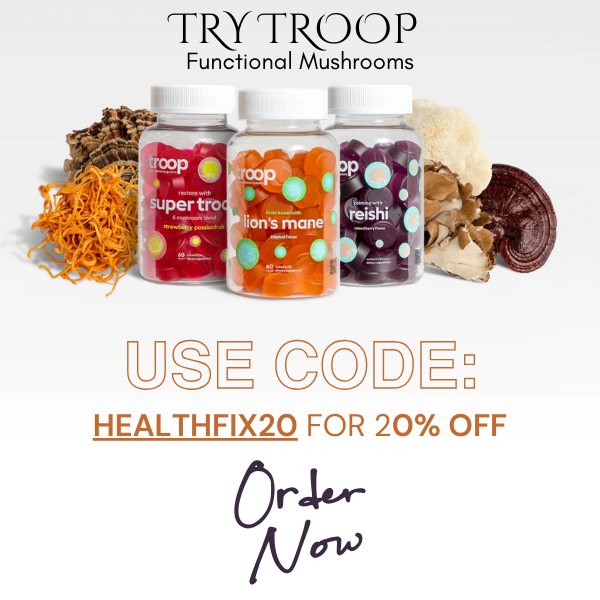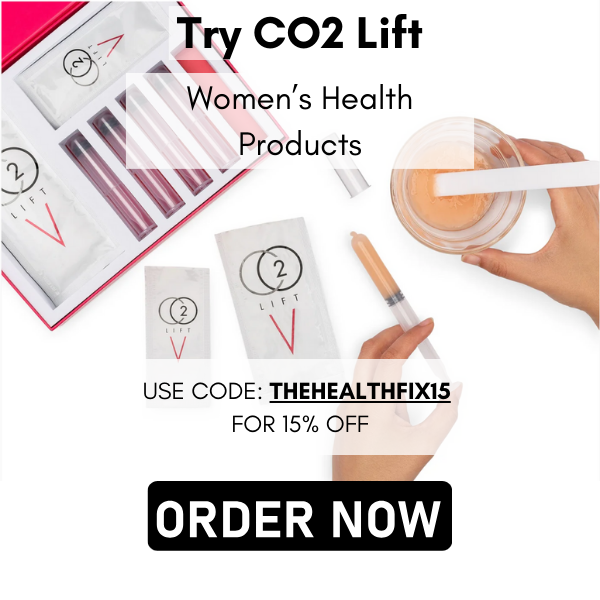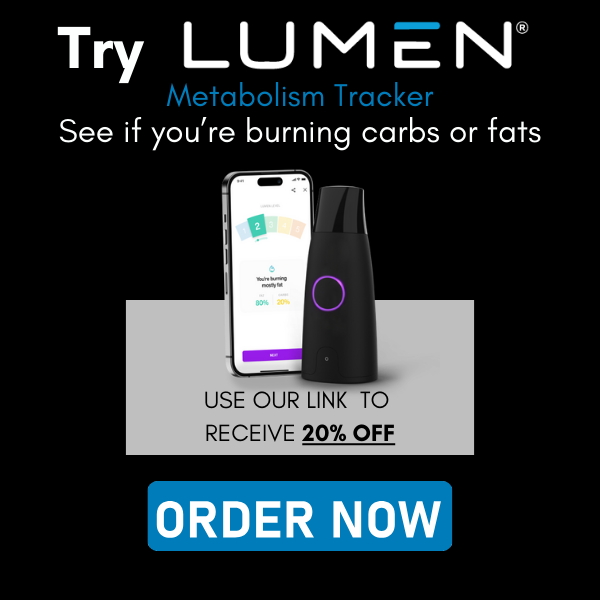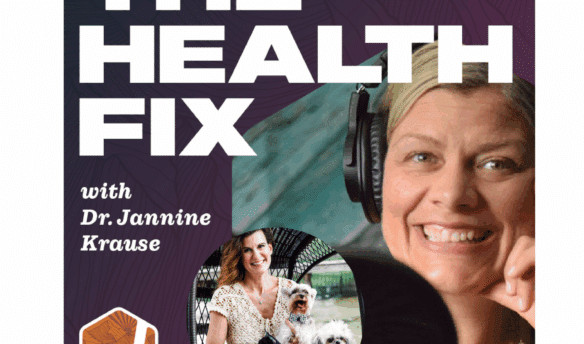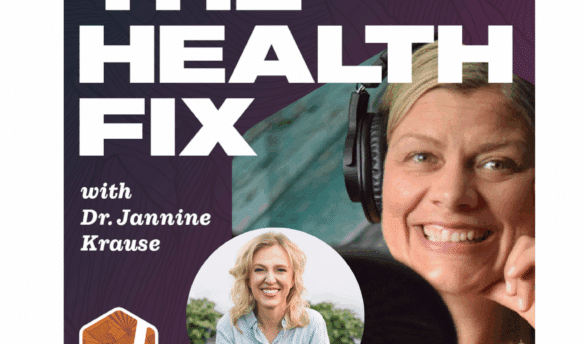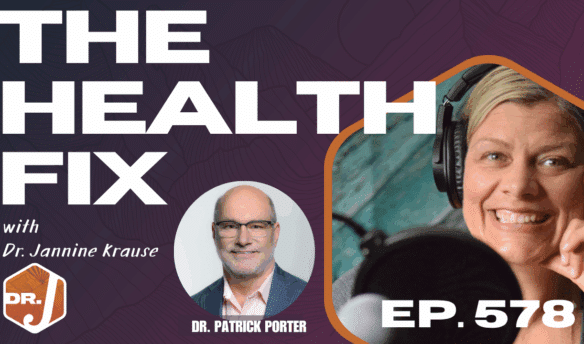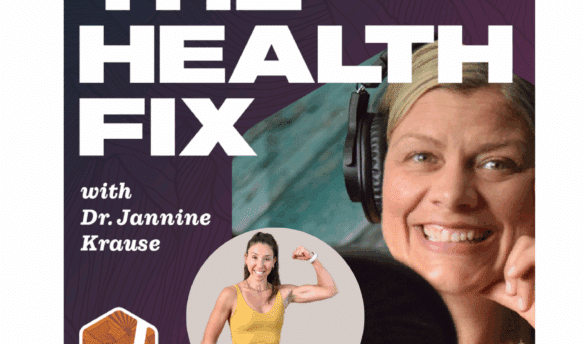History suggests the Olmecs of Southern Mexico were likely the first culture to use cacao as a divine food as early as 1500 BC. Chocolate has long been an expression of love, an antidote to a breakup or a rough day. So is it possible chocolate could be a powerful health food? Sage Dammers believes so! Sage is the co-founder, CEO, product formulator, and master chocolatier of Addictive Wellness. He’s dedicated his life to the pursuit of holistic wellness and nutrition. Beginning his journey as a curious teenager, Sage ventured beyond conventional education to immerse himself in the ancient herbal systems and nutritional practices of indigenous cultures, especially Taoist tonic herbalism. In this episode of The Health Fix Podcast Dr. Jannine Krause interviews Sage Dammers on how he’s created chocolates with herbs to nourish your nervous system, gut, cells and soul.
Dr. Krause’s Protocols
Instructions Included
Traveling soon? Looking to detox or reset your gut? Try one of Dr. Krause’s Fullscript plans.
What You’ll Learn In This Episode:
- Why you can now truly say chocolate is your medicine
- The powerful minerals and neuro-chemicals in dark chocolate
- Benefits of heirloom wild grown cacao
- Risk of mycotoxin exposure with chocolate
- Why adaptogenic herbs and dark chocolate are a perfect pair
- Little known intricacies of the chocolate trade that matter for your health
- How to acquire herbs from the most potent sources
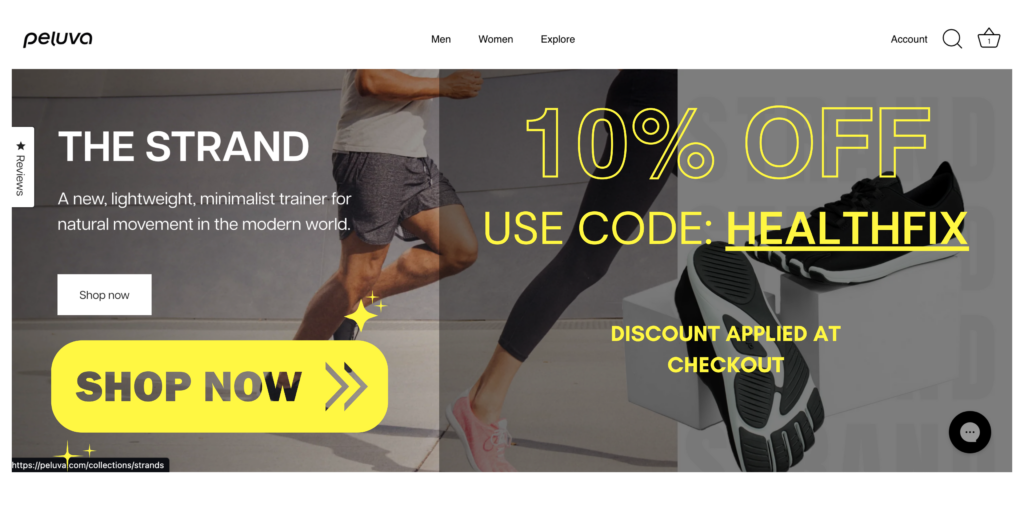
Resources From The Show:
Our Partners
Podcast Transcript
TAGS: Alternative Medicine, Chinese Medicine, Natural Medicine, Holistic Medicine,
3:00 – Sage’s background story
12:36 – Why he decided to deliver health wellness to friends in a chocolate
17:13 – The benefit of sucking on chocolate
19:13 – Quality cocoa. Wild grown trees
20:57 – Mold in cocoa
24:51 – Fair trade
27:00 – Sourcing the cocoa
30:55 – How to eat the chocolates
33:28 – Tonic natures of Addictive Wellness chocolates
40:26 – Jing
42:16 – Qi
43:30 – Shen
48:59 – Sage’s favorite chocolates
51:22 – History of the word addiction
54:59 – Average time it takes Sage to eat his chocolate
[Intro] Welcome to the Health Fix Podcast, where health junkies get their weekly
fix of tips, tools, and techniques to have limitless energy, sharp minds, and fit
physiques for life.
Hey health junkies, on this episode of The Health Fix Podcast, I’m interviewing Sage
Dammers. He is the co-founder, CEO, product, formulator, and master
chocolate tier of addictive wellness chocolates.
So, when I was at Bestyear, I had this dream of creating a chocolate company where I added
tonic adaptogenic herbs to my chocolates and I was literally helping heal the world with
chocolates.
Well that never happened, but the good news is Sage created a company just like I had
dreamed of.
So I’m really excited to share this podcast with you because his concept of tonic herbalism
using chocolate is like my ultimate jam.
Now what is tonic herbalism?
What are adaptogens?
Well, they are herbs that help you feel better.
They like boost up what you need boosted.
And in particular, there’s this concept of the three treasures in Chinese medicine and
and they work on your nervous system,
they work on your gut and cell health,
and they work on your shin,
which is known as like your spirit, your soul.
So these are like holistic herbs,
and they’re working in synergy in your chocolate.
Now, how cool is that?
So anyway, before I give all of it away,
I better just introduce you to Sage,
so he can tell you all about his chocolates
And how amazing it is to be able to add adaptogenic herbs to chocolate.
I’ve tried all of his chocolates.
They’re super good.
They’re tasty.
He’s got a good thing going on here.
So if you are looking to help support your chocolate addiction, look no further.
So let’s introduce you to Sage Dammers.
JANNINE: Sage, welcome to The Health Fix podcast.
SAGE: Thank you so much for having me on.
It’s a pleasure to be here with you.
JANNINE: Oh my gosh.
I have been waiting for this interview for a while because you sent me all your lovely
chocolates and I’m trying them all and letting them just, you know, get into my body and
sucking on the chocolates and going, okay, which ones are like the best.
And so we’re going to talk about my favorite here in a second, but I, you’re doing exactly
what I wanted to do back in the day when I first got out of naturopath school, trying
to educate folks on the concept of tonic herbal medicine versus I take this for a protocol
and then it ends up in the back of my cabinet
and then I take this for a protocol
and it ends up in the back of the cabinet.
It’s the idea of what can I do on a daily basis
to keep health going.
So tell us what brought you to tonic herbalism,
what brought you to chocolate?
Give us your background story.
– I was growing up in Southern California
as a vegetarian and not necessarily a healthy one,
but not the worst one.
You could be, my parents raised us on mostly organic foods
and we were not really eating fast food
So we weren’t stopping off every day at Burger King and McDonald’s on the way home from school.
But there wasn’t necessarily a whole lot of nutritional density and variety in our diet.
So it was kind of like five nights a week of tofu and basmati rice and one night a week of pizza
and one night a week of pasta.
And that was about it on repeat for quite a number of years.
And my parents were doing the best they could with the time and knowledge that they had,
trying to provide for a family of three kids and put food on the table every night.
I hold nothing against them and they’ve given me so many blessings in life.
But I always kind of felt as I was growing up that there was some potential that I was
missing out on something I wasn’t tapping into.
Whether it was in academics or in sports, I would reach a certain level of high performance
in both.
That was pretty good.
But there was always this next step or that I couldn’t figure out how to make.
And I didn’t know why.
I didn’t know what I was missing.
I definitely felt though that something was missing.
I didn’t know is it my genes?
Is it my nutrition?
Is it the way I’m eating?
Because I knew I had a different diet than everybody else.
That was one thing I knew for sure.
I didn’t know any other vegetarians.
And so this is, hmm, I wonder if it’s got something to do with the inputs of what’s going on here.
And the really cool thing is that my parents had a wellness center going back into the early 2000s.
And they had their infrared saunas way before.
This was the cool thing that was popping up everywhere.
They had infrared heated, jade massage beds.
They had some different practitioners working there at
naturopathic physician.
And they had also a little kind of kitchen with selling
different supplements and superfoods.
And so I started seeing what was going on there.
And I would see these older folks, you know, in the second half of life,
let’s say between 40 and 65 coming in and having all kinds of health problems, you know, whether
it was low back pain, neck pain, arthritis, or maybe dealing with some things like Lyme disease
or all kinds of issues, prostate problems, whatever, you saw the full gamut of it there. I was, I was,
you know, 14, 15, 16, working in the front desk. And they would come in and I would see them start
to use some of these alternative modalities and get so much better. And I thought, well,
this is great. I’m so happy for them. And I started being exposed to this idea of an ounce of
prevention is worth a pound of a cure and that you should get ahead of it and start cultivating
your health way before things go wrong. Try to wait until it breaks and then try to fix your car
by the side of the road as it’s broken down to preventative maintenance and make sure it’s optimized
and change the oil, etc. So I realized that as awesome as this theory was, and as much as
all these people coming in here and getting these great benefits believed in this theory
of prevention versus weighting and curing, none of them had actually done it. They had all
waited in their lives until things had started to fall apart. And then they had started to seek
out natural ways to put themselves back together, which is certainly more optimal in my opinion
then going the pharmaceutical and surgery route. But still, they were waiting until it went wrong
and then looking for the cure. A natural one, right? But still, they were waiting. And so I started
thinking, what if I really got on to all of this now? What if I started doing all these things now
that these people are doing, but don’t wait until I get sick? What if I started 16 and started doing
everything I can for longevity and health optimization and anti-aging? What does that mean? What happens?
I had no example of anybody who’d ever done this.
So it was just in my imagination.
Does this mean that I will live a lot long?
Does this mean I stop aging at 16?
Does this mean I can maybe reach
some higher levels of performance?
The most exciting thing to me was,
can I surf longer into my life?
So surfing is my big passion.
I see people surf and then they kind of peek around
like 20s, early 30s maybe in their ability.
Maybe even earlier and then it’s kind of a slow decline until 50s or 60s and then you kind of stop seeing them in the water anymore.
And maybe spot him on the beach right now and then they tell you I can’t serve anymore my back is all messed up.
And so I thought okay what if this means I can peak in my 60s and then keep surfing way all the way through my life.
And I hadn’t heard the term health span before it wasn’t really popularize that time but I was essentially seeking a way to optimize my health span.
And so I started taking in for its honest. I started wanting to learn more about these different supplements that were going on there.
And then one day a gentleman from the local community came in who wanted to talk to my parents about selling his protein supplement product there.
It was a mix of hemp protein and spirulina, chlorella, some other western herbs like milk vessel.
And this was the first example of somebody was the closest thing to what I had envisioned that could be possible for me.
in the sense that he was really healthy, really smart, incredibly smart,
absolutely ripped in his 40s, looked like he was in his 20s.
And he was telling me that he was having this superfood mix twice a day for his meals.
And I said, “Okay, this, I’m gonna try it.
I’m gonna dive into it head first.”
And I didn’t know what I was doing.
I was just blending up some frozen berries, maybe a frozen banana, some Tropicana orange juice,
and a couple scoops of this mix.
And it tasted really, really, really bad.
And so I was trying to make it as cold as possible
so that it wouldn’t be as flavorful.
I was taking a straw and putting it all the way
to the back of my throat, so I wouldn’t have to taste it.
And I was just sucking this thing down.
And I started noticing after a few days
that I would feel this incredible high afterwards.
Maybe a little bit with sugar rush
from all that fruit going into the system
by basically Vi and Ivy.
But I think a lot of it was just giving my body a source of nutrition that I’d never had before.
And so this really opened my eyes physically and metaphorically.
And I started learning and researching more about every single ingredient that was in there and beyond.
And the more I would learn, the more excited I would get to try new things and experiment
with individual ingredients from around the world.
In the realm of, you know, super foods and herbal ingredients, the more I would experiment
with, the better I would feel.
the better I would feel, the more excited I would get to go learn more.
And it kicked off the cycle that never stopped.
And now we’re like one years later, and I’m just as excited about it.
And so as I was doing this and feeling so much better,
I, of course, wanted to start sharing with other people.
You could only, you know, spend so long doing something that’s really
beneficial for you before you want to start sharing it with your community.
It’s like the ancient
Hero’s journey if you go out and slay your personal dragon you want to come back and share with your community
The problem was my community at that time was high school guys and college guys who just wanted to party and get drunk and do you know opioids
It was like oh gosh. What am I gonna do about this? I can’t really share it with them
so I started teaching like superfood smoothie classes at my parents wellness center and
And the audience was like, you know, in their 30s, 40s, 50s, 60s,
and was having a great time, would pack the house there and it was loving it.
But I wouldn’t talk to my friends about much of any of this.
And it wasn’t until I went on a surf trip with some friends to Costa Rica.
And I brought my little magic bullet blender with me and I brought my super
food powders and I would be in the corner of our little hostel hotel room,
blending up these drinks a couple of times a day.
And I didn’t say anything.
I never wanted to be somebody pushing it.
It was weird enough that I was going to all the parties
and not drinking.
I didn’t want to take it to the next level of weird
and be like, “Hey, you should try this weird
super food concoction of ingredients
you’ve never heard of before.”
So I didn’t say anything, but we would grow up surfing
and they would want to come in and be tired
and need to eat and rest after a couple hours.
And I would want to stay up in the water
for four or five, six hours.
And I was also taking [inaudible]
So my, I wouldn’t get sunburned very easily.
And so I was just like, let’s stay out here.
Come on, the waves are great.
It’s beautiful.
And they were like, no, let’s go ahead and have a break.
And they noticed what I was doing
in the corner of the hotel room there.
And they said, hey, could you maybe try making me one
of those before we go back out in the water?
And this is kind of the moment I’ve been waiting for.
And I was like, yes, I can do it.
The problem was I had kind of become desestitized
to the flavor by that time
and forgot how much it tasted like dirt.
And that became immediately apparent
as soon as they tried to drink it.
They were trying to choke this thing down.
And the other thing is that when somebody who’s quite toxic
from the college party lifestyle,
and especially this is like height of the opioid epidemic,
when somebody consumes something
that’s quite powerfully detoxified
and they have a lot of toxins on board,
sometimes you have what’s called the Herxheimer effect
and these things get flushed out back the way they came in.
And so three out of the four of them were immediately vomiting.
And so this really gave me pause.
And I thought, okay, if I’m going to really have a beneficial impact beyond just
myself, with my love for all of these things, I’m going to have to find a different
way to deliver it.
I’m going to, and I had this intention at the time.
I didn’t know how I would achieve it, but I said, if I’m going to deliver health
and wellness to my friends, I have to figure out how to make it taste so good that
people are going to want to eat and drink the things that I make just because it’s an
amazing food experience and just so happens to be massively healthy as an afterthought.
And so that then led me to looking at cacao as this weird food that exists both in the
world of what’s really healthy and what’s good for you, which is rare.
Most things are either really tasty and not good for you or good for you and like my
smoothie, not really tasty. And this is one of those rid ones that exists in both worlds because
people love chocolate and it’s also the highest natural source of magnesium, highest natural source
of antioxidants, you got chromium, zinc, iron, then other neurotransmitter type compounds and
great free biotic fibers in there that have a huge impact on the gut microbiome. And so
I started learning how to make chocolate partially because it could be a cool gateway
health food for my friends. And partially because I thought it would be a cool way to
invite girls on a date and say, “Hey, let’s hang out and make chocolate together.”
JANNINE: Genius.
SAGE: Which is eventually how I got with my girlfriend, who I now, as of two days ago,
been together for 12 years. So it worked. It worked.
JANNINE: Awesome. Congratulations. Wow. 12 years.
SAGE: Thank you. And sorry for the long-winded story, but it was a great journey to be on.
JANNINE: You know what, these stories are what like bring life to the podcast, but also the story about
giving your friends their, your juice. I mean, how many times have probably some folks listening
to this right now, taken something and then had a herxima where whether they vomited, had diarrhea,
they had rash on their whole body and they’re like, Oh my God, this good food stuff is not good for me.
SAGE: And it’s such a shame when that happens because it can turn somebody off of taking healthy actions.
I think I was supposed to feel good from this and now I’m throwing up an upper rash all over my body
So that’s why I learned over time. It’s important to
Go in easy and and not try to throw the whole kitchen sink at somebody
JANNINE: It’s it’s true. It’s true and like you know, we all learn at me as a newbie naturopath back in the day
I was so excited. I’d give people all these things and then they’d be like the next week. They’d be like I don’t I feel worse
No, you know, so of course it likes to Debbie downer for the doc too, right?
SAGE: Right. Yeah, you wanted to have an amazing transformational experience
JANNINE: Absolutely, absolutely, but chocolate like this is this is the genius thing, you know, and also when I was thinking about chocolate back in the day
I was like
What they’re most women since I focus on women’s health of course and optimization
You know my thing was like what woman doesn’t like chocolate?
But then I learned from my husband what guy doesn’t because he’s all in on the dark chocolate too, so
genius, right? And we crave it too, which I find fascinating as well. I’m sure you’ve
heard the stories seen, seen, had it yourself maybe in terms of the cravings.
SAGE: Yeah, absolutely. I think there’s a number of factors that can drive that. I think a
lot of it is the nutritional density and the magnesium content. A lot of it is, I think
the neurotransmitters in there that make you feel happier. You have these things like
anandamide, which is known as the bliss compound or feniethelamine, which is the love bliss
compound because it’s what gets produced in the body when we’re in love.
So it has some amazing things going on there.
And then you have the fact that it’s a rare food with oil that melts pretty close to human
body temperature.
Most oils are either solid or liquid at that temperature.
Not many go through the transition right at that temperature.
So it creates this incredible mouth feel that’s so rare.
JANNINE: That is one of the things that, you know, when I first learned about chocolate, right,
when I was a kid, we had like Hershey’s, right?
Cause I grew up in the Midwest.
That was kind of as bougie as it got.
And so I got to West Coast and realized there may be other brands, like Dove.
SAGE: Right.
JANNINE: No disrespect to any of these companies, but the point is, is like, you know, they’re
gateway, right?
But I had no idea that how that tastes, taking a little piece of those and sucking
on it compared to real chocolate.
Let’s put it that way in dark chocolate.
I think there still is some chocolate in Hershey’s.
I don’t know.
Sorry, Hershey’s, but is what it is.
of we’re not gonna knock them.
I’m gonna knock them.
We won’t, we won’t, we won’t,
they bring you into it.
But that, that mouth feel, right?
I never knew that you needed to suck on chocolate to get them.
SAGE: I’m so glad you say that.
JANNINE: The full.
SAGE: I loved it from the first moment you said that earlier.
It’s, it makes such a difference because when people just chew it
as aggressively as they can and swallow it,
you’re missing out on a lot of the magic there.
If you let it come up to body temperature
and then it starts to really release
It’s full panel of flavors.
It’s gonna be a whole different experience.
And it’s building willpower that way as well, I think,
because you have to resist the urge just to chew, chew, chew.
You just have to let it come up to temperature in your mouth.
And it’s a really like, I think of it like wine tasting,
but for chocolate, there’s a method.
JANNINE: There is, and the different origins of where you get things,
I’ve noticed the longer you let it just sit in the mouth,
the more you can kind of pick out things.
Whereas like wine to me, I drink wine and I’m like,
“Yeah, I taste like wine, the undertones and all that.”
I can’t tell, but with the chocolate, I can.
So I’m guessing when you were looking for sourcing,
you were kind of testing a whole bunch of different ones.
SAGE: Absolutely.
And, you know, growing up in the health world as I did,
I had the great fortune to make a lot of amazing connections
and I’ve spent a lot of time traveling around the world
and sourcing things happen to connect with some folks
doing incredible things in Ecuador on the cacao front.
Because there’s a huge spectrum of ways
that you can get a cacao, a huge variety of quality
and origin.
And so you could get cacao coming from where Hershey’s gets
it in West Africa, where it’s going
to be grown on a plantation.
And you have very heavily hybridized beans
that have been optimized.
And even some Central American and South American beans
are like this.
It’s a variety called CCN51, where
they’ve been optimized for yield and they’re known to have a flavor of acid dirt, which
nobody enjoys.
And so they’re constantly trying to figure out, you know, what can we do to this to make
it taste good instead of just making high quality cacao to start with?
And then you can have, of course, questionable labor sources.
And it can be growing on a plantation in soil that’s been very depleted in an environment
that it didn’t evolve to grow in.
Or you could go to the complete opposite, which is what we do.
And we have heirloom kick-out that is wild-grown.
These aren’t trees grown on a plantation or a farm.
We work with a network of people who have access to these basically wild lands of these
trees that have been growing there for decades.
And so they all bring this kick-out together from various areas that they have access to.
And it’s grown in super mineral-rich volcanic soil.
the fact that it’s wild is really special and magical to me because when something’s
growing on a farm, when it has a farmer and walls and fences and all kinds of manmade
interventions to protect it, it’s kind of like a kid that grows up with a helicopter
parent.
They might look all right, but as soon as the first adversity hits them, you realize
they don’t have much of a foundation to them.
Whereas something that is wild-grown, it has to survive out there in the survival of the
the fittest competing with all these other plants for every ounce of
resource, every ounce of nutrition in the soil, every bit of sunlight that’s
coming through the canopy.
And so this to me is always going to be superior when you can get something
wild grown as opposed to farm grown.
And even with wild crafting as they do of many herbs, you try to grow it in as
semi wild of a situation as possible exposed to the elements instead of lab
grown, et cetera.
And then you have that and then process it in small batches,
very carefully controlling temperature.
So you don’t damage a lot of the heat sensitive compounds
in cacao and also that you don’t grow mold.
And this is a big one growing mold on chocolate
because it’s something that’s present
in almost all cacao products out there.
They often will roast it, which will kill the mold,
but what you have left is the mycotoxins,
which is the metabolic byproducts,
aka the poop of the mold,
which is what’s really gonna do you the most harm.
And that is something that almost nobody talks about
because not many people have a solution for it.
And so the big chocolate company is just kind of try to like,
don’t, that’s not even go there.
But our cacao is many times over third party tested
to be completely free of my good toxins.
JANNINE: That’s huge, because I know a lot of patients
and myself included after I felt like I had
a mold exposure in my house,
I started to have massive headaches eating chocolate.
And I was using some higher quality brands,
but they’re mass produced, right?
SAGE: Yeah, even some of the highest quality brands out there,
I’m sorry to interrupt, even some of the highest quality
brands out there, they still haven’t sorted out
the micro toxin issue.
Even they could be certified organic,
they could have all the right stuff going on
in terms of checking a lot of these boxes,
but the micro toxins is a tricky one.
JANNINE: Yeah, yeah, and here’s the other thing about that,
that I’m curious, ’cause I just saw in the news,
maybe like a week ago, something about this
Bug or maybe it was mold.
I don’t know, something,
I don’t watch the news at full disclosure.
My dad was watching it and I crew-
JANNINE: It’s very healthy, very healthy.
I’m actually watching.
JANNINE: I heard a blurb on chocolate,
like chocolate beans and, oh my gosh,
where’s my brain going with this?
Deficient, deficient brain.
Need more of the energy chocolate right now.
(laughs)
No, where’s going with that is that they,
they were talking about having,
there’s gonna be a shortage of chocolate
because of the crops.
What’s the story on that?
Did you catch that?
Did you hear about that?
SAGE: Yeah, it’s affecting the whole chocolate world.
It’s a little bit crazy, kind of interesting,
a little scary.
Basically what happened is they had a huge rain season
in Africa, basically like an El Nino type of situation.
There was a lot of flooding,
and because of all this water,
there was a fungus that infected a lot of the cacao crop.
So the crop was effectively decimated.
And the result of this, of course, like I said,
We’re not getting our cacao from Africa.
You might think it’s not going to affect you.
The fact is that when you take out a huge chunk of the supply of cacao in the world,
basic supply and demand, people are loving chocolate as much as ever, but you make way
less of it.
Now, there is an imbalance in it skyrocketed the price.
Basically historically, going back decades, the price has hovered around $2,500 to $3,000
per ton of the basic cheapest chocolate or cacao beans.
And it’s been skyrocketed up to 10,000.
So just went absolutely through the roof.
It’s back down now and it’s hovering between seven and 8,000.
So I hope that things continue to write themselves.
Otherwise it’s gonna make for some expensive chocolate bars
in the future.
But already the big mainstream chocolate companies have said
they’re looking to see how they can use less cacao
in their bars, as if that was even possible
because of this kind of a situation.
JANNINE: Well, and like I said before,
I don’t even know how much chocolate’s still in there.
So even less, more reason to go after products like yours.
Now, one of the things that you had mentioned
about the wild, the like cow beans from the wild
was interesting because I don’t think
I’ve ever heard about that, right?
It’s different to me.
I’m used to hearing like the fair trade farms
and blah, blah, blah.
My lingo’s probably off.
But how does Ecuador give permits to folks to harvest these?
How does it work?
Just out of curiosity when it’s a wild, grown product?
SAGE: Yeah, so they have agreements with the local governments
about who can go and access certain wild lands basically.
And you’re totally right that fair trade
is an important question.
It’s more of an issue though for Africa
where the child slave labor thing is a big deal.
It doesn’t tend to be so much an issue
in Central and South America in that regard.
And what happens with this cacao
is that the people who are collecting it
are making many multiple times of fair trade wages
because when the cacao is of such high quality,
they can then sell it on at a much higher price.
And so that has a great ripple effect for them
in terms of being able to make a nice living.
JANNINE: Okay, okay.
So it’s important for me to understand too,
because of course when I want to buy something,
I want to use my dollars to help folks
and help the environment help,
I want my money to make a difference
as much as it makes a difference for me, right?
Especially in the chocolate,
because it’s gonna be medicine, right?
I want the energy to be good as well.
SAGE: Right, and one thing on the environmental print
that’s really cool that I should probably talk more about,
I don’t mention that often,
is that this is incentivizing the local people
to protect these wild lands
in these wild reinforced areas.
Whereas a lot of local people in South America
are incentivized in the other direction
to go in the direction of tearing it all down
for mining and logging, et cetera.
Here you’re giving people a great financial incentive
through paying them for the world’s highest quality cow
a really good price to protect these lands.
So it’s a really, really beautiful thing.
JANNINE: That is huge.
That is you don’t think about it.
And sometimes when you sit down and think about your food source, right?
And you just think about, I got it at the store.
You don’t think about who, you know, all the things like that contributed to you getting
that particular product.
The same goes with the herbs in your products.
I’m curious, you know, Cordyceps, the different types of mushrooms, things of that nature.
Where are you sourcing from?
Give us a scoop kind of how you find, like, how do you find your sources?
What are your criteria, what are you thinking in your mind when you’re looking at besides
the beans, all of the herbs?
SAGE: Yeah, so one of the first principles that we start with and try to adhere to whenever
possible, which is 98% of the time, is D-dow.
This is an old daoist principle that basically means native.
What it suggests is that you want to source something from the area in which it evolved
because if something evolved to grow in one specific mountain region originally, and then it was brought to other places, it evolved for tens of thousands of years, if not longer in that one place to be its strongest and adapted to that particular exact climate.
So if you get it from there, that’s going to be optimal.
So that’s the idea is that we’re going to the places where things are coming from.
So if it’s Ashwagandha, we’re going to India.
If it is Rishimashram, we’re going to Chiang Mai Mountain in China.
If it’s Thai Black Ginger, of course, that’s going to be coming from Thailand.
Also another one we get from Thailand is Blue Butterfly Flower.
Chaga, you can get Chaga Grun in Europe.
You can get Chaga Grun in North America.
But you can get Chaga Grun in mountains in China.
the most powerful is what’s coming from Siberia. So that’s where a chaga comes from.
And so we go to the place where each one is going to have the greatest level of potency.
And all of our suppliers, we’ve worked with for many, many years and have
really put them through the gamut in terms of the third-party testing, and we’re always
continuously testing to make sure that they’re staying on top of their game and never getting
sneaky with us.
JANNINE: Huge. I think a lot of people, this day and age, unfortunately,
Asia’s kind of got a bad rap. Same thing with India in terms of growing. And so I always try to
highlight when folks are looking at companies and testing, you know, you’re testing yourself,
they’re not testing, you’re making sure, you know, nothing’s no shenanigans in that.
SAGE: Right. Right. Absolutely. And it’s exciting to me just to think about all these magical things
coming from around the world, landing into one little bar chocolate and then people getting to
to experience it like that because the reason I started putting the herbs in the chocolate
was that I’m so excited about these herbs, but they have quite bitter flavors a lot of
the time, which our Western palette has not really been trained to enjoy through just
the foods that we grow up eating, the bitter compounds that have very much been bred out
of our Western food supply.
So not many people are having like a dandelion, they’re having a romaine lettuce, so they
don’t know what it would taste like in a more wild form of a lettuce.
JANNINE: Yeah.
SAGE: And so I thought, okay, what are we gonna do?
How are we gonna get people to be okay with this?
The funny thing is chocolate is kind of the one bitter food
that people are somehow okay with.
And so I thought, well, what if we put these in there?
You can camouflage a lot of these bitter flavors
inside the chocolate bar and people will be none the wiser
from a flavor perspective.
JANNINE: It’s true.
It’s an easy hide on a lot of them.
You can’t, I’ll say from trying your products.
it is hard to identify the herb flavors on their own.
I really have to, you know, get in there
and really order it on their own.
SAGE: Right, right, let it melt slowly on your tongue.
You’re doing it the right way.
JANNINE: Yeah, yeah, and so, you know,
of course folks, you guys here are listening.
I didn’t even, obviously in the intro I mentioned,
but addictive wellness chocolates.
I mean, these are not meant, like we’ve discussed
to just wolf them down.
The idea is to enjoy it and get the flavors in it.
And really, I see it as kind of making contact
with your herbs, like getting the energy from the herbs
and just kind of getting that connection to them.
SAGE: Yeah, get the connection to them,
get the absorption going through your mucus membranes
and your mouth so things are gonna start hitting you
a little bit faster.
And I would say to someone who’s wondering,
okay, how am I supposed to eat the chocolate?
Take a bite of it.
Kind of pop it in your tongue.
If you can handle that, like patients-wise
or pop it in your cheek,
let it come up to body temperature
for a minute among 60 seconds before you take another bite.
And that next, if you can wait even longer,
if you can hypothetically just let the whole thing melt
and have extreme patients the best.
But the longer you wait,
the more magical that first bite is gonna be.
[Advertisement] Hey, health junkies.
If your feet aren’t happy and healthy,
the rest of you could suffer
from low back pain all the way up to neck pain.
And yes, even gut issues can be related to your feet
because your feet are connected to your nervous system.
Happy feet equal one less thing the nervous system
has to worry about.
I wanna tell you about Peluva.
This is a new zero drop minimal shoe
with a distinctive five toe design.
Peluva’s give you the most authentic
barefoot style experience,
but with sufficient cushioning to use
in everyday movement fitness and athletic activities.
Peluva’s are super stylish,
so you also get a barefoot shoe that looks good too.
Puluvas are a step ahead of every other zero drop
wide box shoe because they feature separate slots
for each of your five toes.
So if you’ve been using toe separators,
you can ditch them and just wear the puluvas.
Those individual slots for each toe
allow for correct dynamic movement of the foot
through the walking or running stripe,
which is important when toes are encased in a single box,
even a wide box.
Now, minimalist shoes have faced controversy
in recent years about causing injuries
from inappropriate use.
So you want to get walking in Puluvas,
living in Puluvas and doing whatever you can
while you’re going barefoot in your home
in safe areas as much as possible.
So go ahead and use your specialized running shoes,
basketball shoes, work boots, high heels,
when you need to,
but wear Puluvas as much as possible to reawaken
the natural functionality of the human foot
to stand, walk, run and perform.
try a pair of poloovas with no risk,
and you’ll quickly realize that these are the most
comfortable shoes you’ve ever worn.
They’re designed to feel like you’re walking barefoot
on clouds.
So visit poloovapeluva.com and take 15% off
with the code healthfix.
Let’s get back to the podcast.
JANNINE: So now that you’ve described that,
let’s talk about some of the,
Let’s talk about the tonic nature that you brought to each and every one of the
chocolates because each and every one has herbs that I would think of would make
sense, especially the love chocolate, dameyana in there.
I mean, this is like in the moment kind of thing too.
So let’s talk about that one first.
SAGE: Sure.
So in our chocolates, instead of having different flavors as so many chocolate
companies will have, you know, you’ll have a mint, maybe you have a cayenne chocolate,
an almond chocolate, a hazelnut, whatever.
I wanted to go a different direction because I have this deep passion for traditional herbal systems of indigenous cultures, especially the systems of Ayurveda and also Daoistonic herbalism, I think, is my number one area of love.
So I wanted to really feature these and have the chocolate bars be focused on them in a way that would inspire people to learn more about these individual herbs to understand them and maybe even end up later trying them individually and developing a one on a one relationship with each of these herbs.
So I wanted the chocolates instead of having flavors to have functions.
So each of our chocolates has a specific herbal formulation for a different function.
So as you mentioned, love chocolate.
So in here, some of the stars, the show are gelatinized makka, which is a famous
apritisiac, but also very supportive of energy and endurance and oxygen utilization.
Then we have to stanch.
This is coming from China and helps to direct a blood flow south of the border, which
is just as important for women as it is for men.
You also need blood flow for really healthy sensitivity.
And also is just the yong jing, fiery kidney adrenal
clinic.
So that’s in the Daoist system is where you really
have the sexual energy, as they would call it.
And so it’s a classic sex tonic.
And then we have Black Ginger from Thailand.
And Black Ginger does a lot of things.
It helps protect the brain from the negative effects of stress.
It helps turn on fat metabolism and build brown fat in the body, which is great for the mitochondrial
density. It helps with energy and exercise performance and endurance, but it also is a phosphodiseries
inhibitor. Also, those blue pills also phosphodiseries inhibitors. Now, you’re not going to get as overt
a reaction to this necessarily as you would with something of pharmaceutical concentrations,
but it still is working in that direction. So what it does is phosphodiseries,
effectively limits how much your blood vessels can dilate. If you limit or remove phosphatized
aeration in the equation, your blood vessels can dilate more. So this is removing the limiting
factor when it comes to circulation. So for guys, of course, it’s tremendous for women as well.
Though, as I said, good circulation means more sensitivity and reactivity. And then in here,
we also have Hoshu Wu. So this is a yin-jin sex tonic, which means it’s a little bit more
replenishing because for guys, the loss of fluids during this time can be depleting as well as it
was seen in the Taoist health philosophy. So in the ideal world, guys learned how to have
non-aggressory orgasms and multiple orgasms. But in the meantime, you want to make sure that you
are replenishing yourself, replenishing that core kidney adrenal essence, and not getting to a place
where you’re replacing stress on your HPA axis, just because you’re out there having too much of a good
time. And then we also have Rishi in here because Rishi is the herb of immortality and spiritual
potency. And this does two things. One, it’s getting you out of your head and into your heart,
out of thinking and into feeling because people have stressful lives, sometimes switching gears
into romance can be a little bit tricky. And then it’s just it’s heart opening. It’s really
helping to create that connection with the other person on a heart level. So it’s not just a, you know,
a base chakra experience.
JANNINE: That makes sense.
That makes sense.
Yeah.
The, the way that the herbs are set up in each of the chocolates, you know, I was
looking through them and going, okay, this makes a lot of sense.
So let’s, let’s talk about Thomas tonic herbalism for, for a little bit so that
folks can kind of really get the background with the energy balance of hot
and cold, you know, and young things of that nature, give us kind of like a, I
I guess like from the perspective of why we would want to take a tonic versus, you know,
why not take just a supplement for a protocol like I mentioned in the beginning.
SAGE: Sure.
So there’s three classes of herbs as they were seen in China and by the Dallas.
The one class is poisons.
You reserve this for your enemies and that’s about it.
You don’t give it to people that you care about.
The second class is the medicine alerts.
This is something that as you said you would put in a protocol that you do for a short to
medium term period to address a particular health condition or a particular imbalance.
And then you would stop because the long term there could potentially be some negative side
effects that would build up.
Then you have this elite class of the tonic herbs.
These are herbs that you can use short to medium term to sort things out, but you can
also really use them long term in small amounts daily over the course of your life to build
this foundation of radiant health upon which you can build an extraordinary life.
And so with these herbs that you have the concept of yin and yang, some herbs like hoshua wu is a
more yin herb, cystantch is a more yang herb, and some of the ones that we’ve talked about.
And so yin being cooling and replenishing, yang being more fiery and expenditure of energy.
And you of course want to establish balance. And so somebody who tends to be more yin by nature will
benefit from having some more young herbs, somebody who tends to be more young and high
intensity by nature, will benefit from having some more yin herbs like Hoshu Wu to calm things
down, replenish, bring you into a more of a state of equilibrium. But then what I have always
down the most romantic and incredible about the Daoist system is the concept of the three treasures.
And they traditionally would use the metaphor of a candle to describe these. In the modern world,
I find it helps a little bit more to use a financial metaphor. So they say your life is made up of the three treasures and these are jing, qi, and shen.
And in the metaphor of the candle, the wax and the wick is the jing. This is your core essence. It’s your core kidney adrenal vitality.
One might also say it’s the health of your HPA axis in the modern medical understanding.
In the financial metaphor, this is your savings account.
And so everybody comes into life with a certain amount of jing that we’ve inherited from
our parents.
And this is based on how healthy our ancestors were, what their lifestyle was like, were
they already on to process foods for our parents and grandparents, or were they eating more
of an ancestral nutrient-dense diet, in which case they have a bit more vitality if they
can pass on to us.
And of course, what prenatal nutrition was like, it’s also going to affect this as well.
And I look at this as, that is your, what’s called prenatal jing.
And this is like your trust fund.
Some people come into life with a big fat trust fund and of energy.
And they never have to really worry about taking care of their health.
These are the ones who they drink and smoke in.
And they’re still sort of pretty healthy and they make fun of people like us for actually
having to be active in taking care of our health.
They say, look at me, I drink, I smoke.
I’m fine.
But then they of course tend to hit a wall at a certain point and suddenly die of a heart attack because they never learned to sense when their jing is running out.
And when your jing runs out, that’s the end of this lifetime.
So they just suddenly go off that cliff and that’s the end.
Whereas somebody who is more yin slowly loses their energy through life.
And if somebody starts out with not as much jing, maybe you didn’t get that trust fund because you didn’t inherit this foundation of health from your parents.
So you have less and so you have to be more careful with what you have.
You have to really budget your expenditure of energy and how much you’re going to
party and how much you’re going to stay up late.
These things, any kind of excessive living is going to deplete your jing at an
accelerated rate.
So you’re always using it up little by little, but if you’re stressing hard,
if you’re not sleeping well, if you’re doing drugs and alcohol, having a poor diet,
these things are all called jing leaks.
It’s where you’re just like pouring it out without, without really thinking about
the long term. And so people who start out with not much jing tend to have to really take care of it.
And so they tend to not die suddenly. They tend to slowly fade out because they’re using at a slower pace.
And so that’s the jing. It’s your savings account. And if you are constantly pulling from your savings
account to live, that’s not a sustainable way of living. That’s not going to really work out long term.
Then you have the second treasure.
This on the candle is the active part of the candle.
It’s the flame in the financial metaphor.
It’s your checking account.
This is the cheat.
This is where you do your daily deposits and withdrawals.
Qi is something that you accumulate through proper rest.
It’s something that you accumulate from basically the air you breathe
and the food you eat.
It’s that active energy.
And if you are making lots of chi, if you have lots of inflow
coming into your checking account, you don’t have to worry about dipping into your savings.
And that’s a much more sustainable way to live.
However, if you’re not eating well, you’re not sleeping well, you’re not generating
Qi, you have to rely on that savings account.
And this is like when you see people who are addicted to caffeine and just cannot go through
the day without five to 10 cups of coffee.
For example, coffee, look, if it’s clean sourced and if it’s very high quality and done in
moderation can be a total superfood. But if you are dependent on it like this, it means
that you’re not making enough Qi, you’re relying on coffee as an adrenal stimulant
to force you to dip into those savings, dip into those savings. And it’s not a superb
long term strategy. Whereas if you’re generating abundant Qi, you’re living sustainably and it’s
going to be a very awesome life. Then the third treasure is what’s called the ultimate
treasure. This is your Shen because the purpose of a candle is not just to have a big flame. It’s
to give off a great light. The purpose of life is not just to have a big fat checking account,
it’s to have a beautiful impact on the community around you. So Shen, this is the light that the
candle gives off. It’s the light in your eyes, it’s your spirit, it’s your higher self, it’s your
ability to bring light into others’ lives. And the financial metaphor, this, if you get a great,
If your savings account is doing really well, if your checking account is doing really well,
what do you do? You set up a nonprofit to benefit those around you. And so there are herbs that
specifically work on each of these treasures. We talked about cesstanch and hoshu woo. These are
great jing tonic herbs. And some herbs do more than one treasure, cordyceps mushroom,
or quarter seps fungus. This is working on both jing and chi. Then we talk about rashi mushroom.
It’s a rare three treasure tonic herb, meaning it’s working on Jing, Qi, and Shen.
So the idea is you build these three treasures and this creates, basically, if you think of your
life, sorry to switch metaphors, but if you think of your life as a house, these treasures are the
foundation of the house. If you have a house with a strong foundation, when a big storm comes true,
when things get crazy in your life, you’re going to have a strong foundation, you’re going to be
steady and things are going to happen around you, but you’re not going to be thrown off balance.
Whereas if your foundation is rickety and you’ve been stealing from your foundation and selling the parts just because you weren’t having enough money, you’ve been selling the cement from the foundation of your house because you needed a few extra bucks here and there.
Okay, now when this storm comes through, you’re going to be in real trouble because you’ve.
If I could switch metaphors again, your tree has not doesn’t have the deep roots to keep itself solid
Sorry, I’m all over the place with that one
But sticking to the house like you want to build this strong foundation so that when the storm comes because it will we all are gonna experience
some
Raisingness some hecticness some tragedy at some point in our lives. You want to be solid and and not be completely crushed by it
All
JANNINE: Makes sense makes sense. Yeah, you know, and that’s kind of where I see tonics as they’re like your foundation
but they’re also your support. A lot of folks are familiar now with the Daptogenic herbs and
and that’s why there are in a lot of your your chocolates, but they’re also the the main thing
as a tonic and so I really want folks to to understand that like this isn’t meant to be like,
oh I need more focus so I’m gonna take Sage’s chocolate focus and I’m going to do it for like
like a month and I’m gonna better focus
and then I can stop it and then it’s gonna magically stay.
It’s meant.
SAGE: Right, there’s various stages of experiences
with these herbs.
For a lot of people, the first experience
can actually be pretty awesome.
And I love that first experience
because I think humans don’t really sense speed,
they sense acceleration.
So if you’re driving, you could be going 85 miles an hour
on the freeway and it doesn’t feel that fast.
you just go.
Whereas if you’re going zero to 60 in two seconds
in a modern ultra high performance car,
whoa, your head goes to the back of the seat
and you feel that.
With herbs and health in general,
people get used to whatever stage of health they’re at.
And it’s the shift that is what they notice the most.
It’s when they come back to you after maybe a month on
some of your protocols and they say,
wow, this feels so different.
I have so much more energy.
eventually they’ll forget about the extra energy and it just becomes a new normal.
It’s a donic adaptation.
But when somebody has a first experience with the urban and it,
some can sometimes create a pretty immediate shift in them.
It’s so exciting for me to see because that is what I think drives people to,
to keep at it and, and keep wanting to stay at that speed after you’ve been going,
after, after you go fast, you don’t want us to look back down.
You once you’ve had a little taste of how good life can be with some of the most
amazing substances coming into your body. You don’t want to go back. And so there’s that experience.
And then over the first, I would say four to 12 weeks, you’re certainly going to see a build up
of benefits in most cases. This is usually the period of time over which studies are done on these
herbs. It’s rare to see long term studies done over many years. It’s usually in the four to six
week range. And so I tell people at least take an herb for a month before you come to any conclusions
about whether it’s working for you or not.
Unless you’re having a rare side effect to it,
of course, this is to continue and speak with a practitioner.
But in most cases, at least do it for a month,
if not two or three, to really get the kind of experience
that you would see in a study and then understand
that long-term benefits are going to even continue
to build further and further into the future.
JANNINE: Makes sense.
Makes sense.
So, I mean, that being said, of course,
guys, I’m going to reveal my favorite of all of Sages
is the energy one. I love that one. And then focus was second. And probably that’s where I need,
you know, I feel like the herbs call to you because you need them, you know, and you need to
keep them going and go. And so my question to you is, what’s your favorite out of all of yours?
Which one are you kind of drawn to right now? Or did you have one book? You know, have you kind of
went through–
SAGE: it goes through phases, it goes through phases. And because I’m, of course, I’ve
been blessed to be able to create this life for myself with an infinite amount of chocolate.
I’ll like to eat every single day. So I have five options, which I’m just like incredibly blessed for.
So I would say at the moment, focus is my number one, because work intensity is quite high at the
moment. There’ll be periods where I cycle through basically all of them, though, depending on what’s
going on. If it’s a romantic night, it’s a love chocolate. If I’m working a lot, focus, as I said,
if I’m working out or going surfing, okay, energy chocolate is going to be the go to if I’ve been
burning the candle at both ends a bit too much. I need to build back that jing. We have a chocolate
called recharge. It’s all the best jing supportive herbs. If it’s, you know, sometimes I’ll be really
like, okay, let’s work on my skin health. Okay, now we’re talking beauty chocolate.
And then we just immunity is always important, especially in the past years, to always be on top
top of your immunity. So we’ve got one for that. And it’s just, um, I, like you said,
you listen to your body and see what it’s asking for at the time. And that’s also a
part of what I love about having the functional chocolates is it gets people that at least
spend a moment when there’s either on the website or standing in front of the shelf in
the health booth store saying, Oh, I’m not just thinking about what I want to taste.
I need to think about what I want to experience and get in touch with my body and where I
I need to improve things and what I need to cultivate.
So it gets people, I hope to have a little bit more
of the body awareness that can be such a great tool
for addressing and supporting their health longterm.
JANNINE: I hope so.
I mean, when I look at this, all of your products
and I look at everything and I go,
oh my gosh, how genius, right?
Because now we’re taking, and you have it
on your little flap there.
Like, isn’t it?
May all your addictions be beneficial?
Is that what you said? –
SAGE: Exactly.
Oh, good memory.
Yes, even taking the focus chocolate.
JANNINE: I have been trying.
I have been trying.
But yeah, that to me is if you’re going to have an addiction, you might as well make
it benefit you because so many people I know are reaching for chocolate every day.
So why not spend a little bit more on a higher quality chocolate that is your tonic.
So this is your medicine, right?
That’s absolutely.
SAGE: And the funny thing about the word addiction as well, because it kind of throws some people
for a loop is that originally it comes from the Latin, Addictionum.
And this was traditionally used to mean to be devoted as in devoted to ones loved ones
or ones God.
And it wasn’t until heroin came into the picture and people begin to have this devotional relationship
to the drug heroin that people switched this and it’s like, oh, he’s devoted to heroin.
He’s addicted to heroin.
And that is when we lost the beautiful side of the addiction idea.
But our thought is, yes, we should be able to get you addicted to stuff that is really good for you.
But also at the same time, we would like you with addictive wellness, we want you to be devoted
to your wellness and have that be something that you put effort and attention and focus into cultivating.
JANNINE: I like that. I like that a lot. So if someone’s thinking right now,
Sage, you’re like, “Hmm, you have a lot of different types of chocolates that you offer
and different purposes.” Where do you have folks start? What’s the entry level?
and you know, all of the chocolates guys are like four squares. So there’s not a lot there.
So I’m curious as to how you recommend like someone get started and how they dive into
your chocolates. Where is the starting point?
SAGE: For a lot of people, they’ll look at the different functions and one will jump out of them and you
go with that because everybody’s body is so unique. Your state of health is so unique. What
you’re going through in your life is unique. So I won’t be able to tell you which is the perfect
which one for you.
If you’re overwhelmed by all this talk
of adaptogens and tonic herbs,
but somehow you’re still listening to this,
there is one called Pure, which has no herbs in it.
And we primarily made this for people
who are not ready for the herbs,
or more specifically for pregnant and breastfeeding women
who need to simplify things and not be consuming
to many exotic herbs at this time.
And then look at what is gonna suit your life, I think.
You can never go wrong with any of these
in the sense that it’s always great to have a healthy brain
with a focused chocolate.
It’s always great to have cheap production with energy.
Recharge chocolate.
It’s good to build your jing.
Immunity chocolate, fortify your defenses.
There’s not a wrong way to go.
So just try to listen to your body
and see what it’s asking for.
And then you try one.
And like we were talking about, take one bite out of it
and then let it melt in your mouth.
And at least give it 60 seconds before you take the second bite
with your molars there into it.
and have that experience of the different flavor notes
in the cacao, and then you’ll start to detect
some of the different interesting, more dynamic flavors
coming through from the different herbs in there.
And then just be present with that experience
and pay attention to how it affects you.
And then maybe next time you wanna try a different one,
or maybe you try a variety pack and you know,
you get them all and work your way through it.
And now you’ve been introduced to a bunch of different herbs
and suddenly you know quite a bit about adaptogens
And you can tell people I’ve had to stanch, I’ve had mak, I’ve had, you know, uh, uh,
Ashwagandha, I’ve had Thai, black ginger and blue butterfly.
You’re going to dive right in the defendant.
It’s going to be awesome.
JANNINE: I like that.
I like that.
So I’m, I’m imagining, right?
Someone’s got their chocolate.
They take a bite, right?
They’re, they’re kind of just letting it roll around on their tongue.
Cause I, I like the idea of experiencing the herbs.
I mean, that’s what I wanted people to do forever, because I feel like that’s the
way that you’ll commit to using herbs to take care of your health.
or manage your health, if you will, or boost your health,
whatever word you wanna use.
But we’re one square.
What’s the average time that you take
to consume one square of your chocolate?
SAGE: It depends on my state of mind at the time.
So as much as I talk about, it’s good to let it dissolve
and it’s gonna stop.
Sometimes I’m a little bit too aggressive,
even I and I just get right into biting it and it’s maybe a 30 second experience. However,
most of the time I will try to take that bite, hop it in my cheek, warm it up for one to two minutes
and then if I’m really feeling the zen, I will just let it sit on my tongue and just dissolve,
dissolve, dissolve. But usually I’ll give it that one to two minutes warm up and then as it becomes
a little more soft and fudgey I’ll enjoy that biting into experience from there.
JANNINE: Nice. I was curious. The focus one, I kind of was like writing when I was taking that
one just to enhance the experience. And so I was doing the same kind of thing, take a
little bite, let it sit, get the herbs in, write a little bit, and take another one.
It took me probably like five minutes to finish one of them.
SAGE: Oh, yeah.
JANNINE: It was like the most glorious chocolate experience. So I really want, obviously we’ve
I’ve mentioned this like six times.
‘Cause I really want folks to understand that like,
you don’t need to mow your chocolate,
like take your time, get the herbs in,
and I do believe like that it gets in better that way.
SAGE: Absolutely, absolutely.
And people find with this chocolate
that they’re satisfied with a much smaller amount.
If you look at, it was funny
when we were creating the labels originally for our chocolate
set, we worked with an FDA labeling consultant
in the beginning of our business
to make sure everything was compliant.
And a point that he said was, you’re not using the correct FDA
serving size because the FDA serving size is 50 grams, which is
more than even one bar of our whole bar of our chocolate.
But very, very rarely were people finding it, you know, important
to have that much or finding that they had desire to have that much.
They max out on one or two pieces very frequently.
Some people have a whole bar and that’s totally fine too, but it
just wasn’t the common thing.
And so we kind of just dug our heels and said, no, we’re leaving it at half a bar is going
to be a serving because that’s what the reality is of what people are doing and feeling really
good with.
So it tends to because of the nutritional density of this cacao because it’s not something
that’s, you know, 40 or 50% sugar, that’s not going to give you any real deep satisfaction.
This is healthy fats, cacao, antioxidants, polytheanols, prebiotic fibers, and then you
add in the herbs and keep it all sugar free at the same time.
So that you can, this is the big thing for me as I was getting into chocolate
making to it, that I was dealing with the consequences of having taken antibiotics
a lot earlier in my life.
There was a period of five years where I was taking daily antibiotics.
And I had Candida come in on the tail end of that and, and take over as my gut
microbiome had basically been wiped out.
And so I had to figure I had to have something that was sugar-free because even though there
were some pretty cool chocolates out there that were in the healthy direction, you could only
have so much, even if it was like a coconut sugar or amoebal sugar, at a certain point,
you say, “Okay, that’s too much sugar.
I’m going to give myself a candida flare up here and my skin’s going to let me know about
this real quick.”
So I thought, “I need to make this sugar-free to remove that ceiling of chocolate enjoyment
so you can have all the chocolate you want and not be stressing on the sugar front.”
So we sweetener chocolate with a combination of organic alkylos and organic monk fruit.
So you get a really nice natural sweet flavor without affecting your blood sugar in any way
and feeding into any kind of sugar sensitive conditions that so many people have.
JANNINE: It’s hugely important.
I have a lot of patients that struggle with the skin stuff with the Candida and just gut
stuff too.
It’s so important.
And we had mentioned that everything’s Stevia free now, because we had had one that was
had some Stevia.
And so for folks who are worried about the Stevia flavor, you do not have Stevia in anything.
Right.
SAGE: For many years, many years we did Stevia and Zalitol as our sweeteners.
And then as more new options to become available, we transitioned actually just this week.
We’ve completed the final transition into our new formulation of alulose and monk fruit,
which people are enjoying even more.
So I’m very excited for people to experience it.
JANNINE: Oh my goodness.
Sage such great stuff here.
I love the chocolate.
I mean, I had to nail down some favorites,
but probably because of what it was going on in life
at the time when I was trying them all.
But I have no doubt that I could easily have a pack
of all of them and just kind of choose
like what am I feeling today and keep the tonic benefit
going throughout the week.
So gosh, great stuff.
Thank you so much for coming on
and chatting all about Addictive Wellness
and all these chocolate things.
SAGE: My pleasure.
JANNINE: I’m excited to share this podcast.
I was so excited when I got your samples.
So this is fun stuff.
SAGE: Thank you for giving me the opportunity
as you can tell, I get pretty excited about this stuff.
So thank you for giving me the opportunity
to share my passion.
JANNINE: Oh, my pleasure.
[Outro] Hey, health junkies.
Thank you so much for listening to another episode
of The Health Fix Podcast.
To help support my mission,
to bring you tips, tricks, and tools
To help you optimize your health, I’d be grateful
if you’d like, subscribe, and write me a review
for the podcast.
And if you hear a product you’re interested in
on the podcast, you can now go over to my website
to learn more.
That’s Dr. spelled out, J, K-R-A, U-S-E, N-D, dot com.
Just click on shop and you’ll find all the information
on my favorite products that I stand behind
and use myself.
All affiliate income earned with your purchases
goes directly to help support the production of the podcast
so I can keep bringing you quality health information.
I appreciate your support and I’m honored
to have you listening to my podcast
as a fellow health junkie.
Thanks again.
All right.
